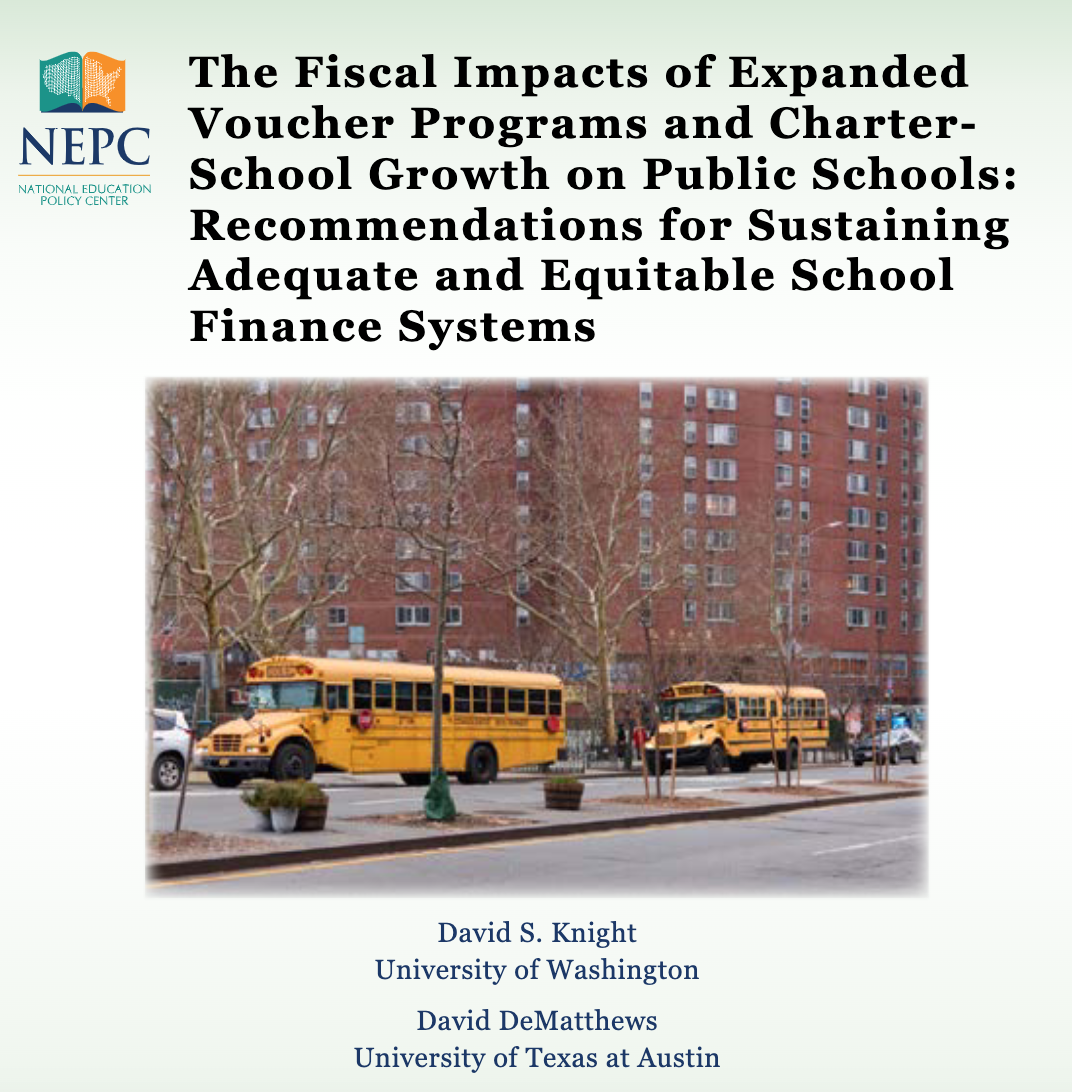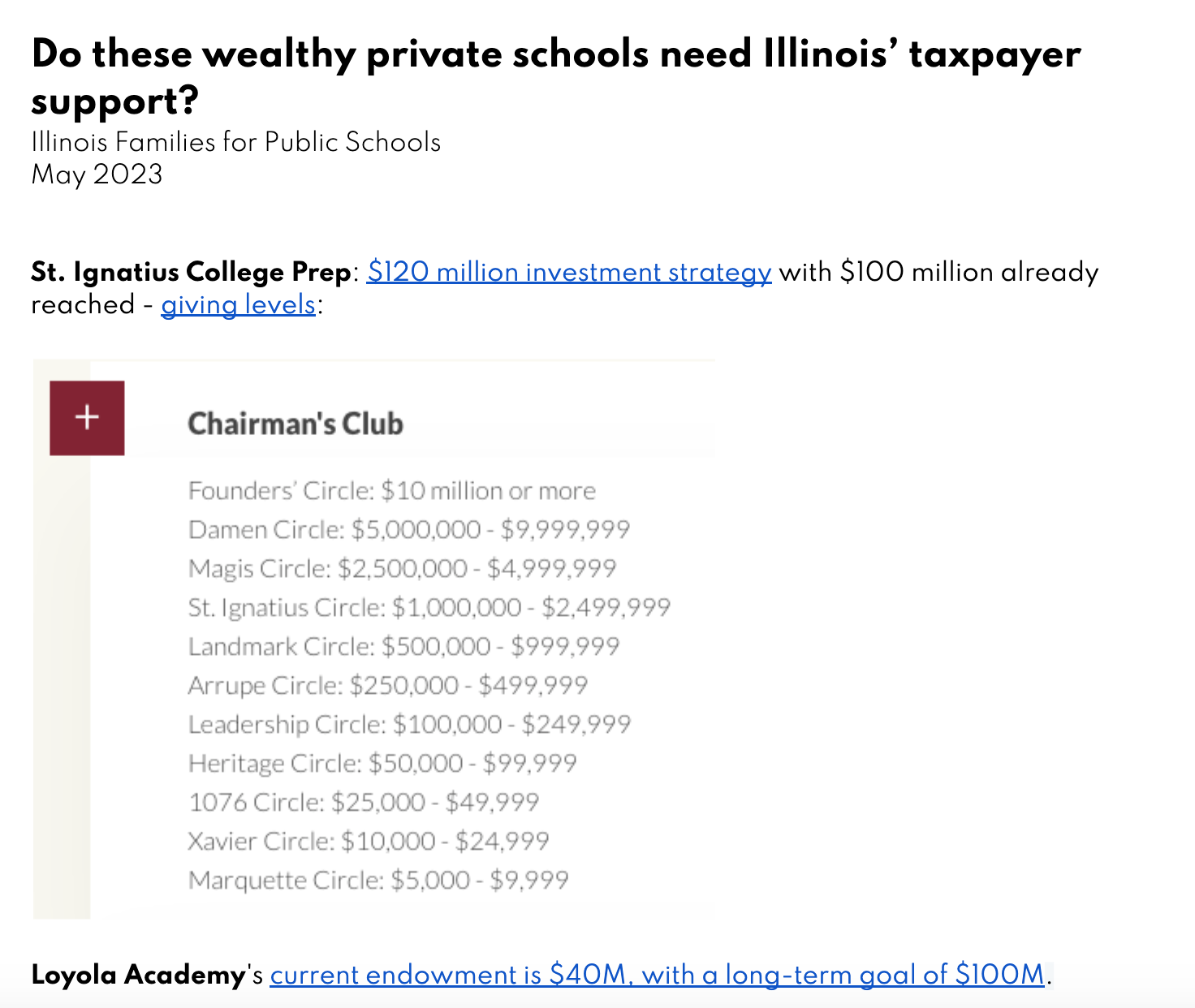
INSIGHT
Reports, studies, and data show that voucher programs don’t deliver.
This category provides comprehensive and data-driven insights into the complexities of voucher programs, with detailed studies and reports covering a wide range of topics including academic performance, civil rights issues, and the impact on specific groups like students with disabilities, those of different religious backgrounds, and the LGBTQ+ community.
It also delves into the broader implications of voucher programs on public education, such as their effect on segregation, accountability, and overall accessibility. Below, you’ll find empirical evidence and thorough analysis necessary to understand and effectively challenge the dynamics of voucher systems.
Three years ago, Arizona became the first state to allow all students—regardless of income or need—to use public dollars for private school tuition and other educational expenses. The move marked a sweeping shift in the scale and scope of school choice in the United States.
This document lists articles from different states on the percentages of voucher students who never attended public school or were already in private school.
Most of North Carolina's publicly funded general private school tuition vouchers this year went to students who were not enrolled in a North Carolina public school the year before, a new state report shows.
The North Carolina Department of Public Instruction found 6,710 recipients of the voucher, called an Opportunity Scholarship, this year attended a public school in the state last year.
All children deserve to attend welcoming and well-funded schools where they can learn and grow, regardless of race, disability, or income. But funding for public schools, where nearly 90% of all U.S. students learn, is at a near crisis point. The Trump administration’s goals, which are taken right out of Project 2025, seem to be to defund public education to the point that it doesn’t work, then offer private school vouchers as a solution to a manufactured problem. In this post, we highlight five ways public education is on fire in the United States and the damage this will do to students’ abilities to learn and thrive. Instead of cutting funds, lawmakers should invest in public schools, one of the best tools we still have to build a prosperous, equitable country.
The Urban Institute released a report on April 22nd that has been gaining excessive attention among advocates of private-school vouchers. In the Q&A below, National Education Policy Center director Kevin Welner asks Josh Cowen of Michigan State University to help us un- derstand that study and why there has been so much interest among folks who have other- wise been shielding their eyes from recent voucher research. Prof. Cowen was lead author of a similar study published in 2013, so we thought he would be the ideal person to comment on this new one. Cowen is the author of the 2024 book, The Privateers: How Billionaires Created a Culture War and Sold School Vouchers (Harvard Education Press).
The U.S. Department of Education has projected enrollment declines over the next decade, leading to budget cuts for school districts, which will be particularly impactful in urban and rural areas serving vulnerable students. As federal COVID-19 funds expire, districts will face challenges in cutting costs, potentially leading to layoffs or school closures. Meanwhile, many states have expanded voucher programs and charter schools, diverting funds from public schools despite limited enrollment growth. Research shows these shifts harm traditional public school financing. To address this, policymakers must ensure equitable funding for public schools and hold charter and private schools to the same standards as public ones.
The growing popularity of vouchers raises a host of crucial questions and concerns. Key to informing the debate are questions of public finance and education quality. Is allowing public money to leave the public school system and follow kids to private schools the most effective or equitable way to make sure every child has access to an excellent education? Our view is that it’s not. Public dollars allocated to education should go to boosting spending in public systems, not subsidizing private education.
Florida is already deeply underfunding its public schools. The state sits at the bottom of the national school funding rankings in ELC’s Making the Grade 2024 report, scoring grades of ‘F’ for funding level, for inequitable distribution of that funding, and for funding effort. As funding for private education vouchers has increased, it is consuming an ever larger portion of overall taxpayer funds directed to education, increasing from 12% of public funds spent on education in 2021-22 to 23% this year.
The Kentucky General Assembly enacted a private school voucher program in 2021 and legislation was filed to expand the program before the state Supreme Court struck it down for violating Kentucky’s constitution. That decision led directly to the legislature putting Amendment 2 on the ballot. Similar states that lack Kentucky’s constitutional protections for public education have recently increased spending on vouchers and school privatization at a rapidly growing cost to their budgets. Given that history and context, it is plausible to assume the legislature will pursue a similar path if voters approve the amendment.
The information surrounding universal voucher programs is rife with advocacy masquerading as research.
Amid a wave of legislation that created or expanded private-school choice programs across the country, Robert Enlow, the President/CEO of EdChoice, dubbed 2023 as “the year of universal choice.” Enlow wasn’t wrong. Universal eligibility is the defining trend in recent private school choice reforms. For decades, private-school choice programs (like vouchers) provided funds only to certain families—e.g., families with low household income or a child with a disability. Recently, however, Republican lawmakers have created or expanded private-school choice programs to allow nearly all students, regardless of their individual need, access to public funding to attend private schools.
The first step in stopping the privatization movement is to understand it. This report takes up where our 2018 report left off. Not only do we grade the states based on their willingness to commit exclusively or primarily to democratically governed public schools open to all, but their willingness to put sufficient guardrails and limits on publicly-funded alternatives to ensure that taxpayers, students, and families are protected from discrimination, corruption and fraud in the programs they have.
The first step in stopping the privatization movement is to understand it. This report takes up where our 2018 report left off. Not only do we grade the states based on their willingness to commit exclusively or primarily to democratically governed public schools open to all, but their willingness to put sufficient guardrails and limits on publicly-funded alternatives to ensure that taxpayers, students, and families are protected from discrimination, corruption and fraud in the programs they have.
Texas Governor Abbott called a special legislative session in October 2023 to press legislators to establish Texas’ first-ever private school voucher program, funded by all Texas taxpayers. Instead, Texas needs to invest in public schools that serve 5.4 million students and their families. The proposed voucher program would cost $500 million. Get resources here to help Texas say no to vouchers!
Illinois Families for Public Schools developed a fact sheet with information and resources about the funding behind wealthy private schools.
This session, General Assembly leaders have placed a massive expansion of the state’s voucher program at the top of their education agenda. Legislative leaders in both the House and the Senate want to triple the program’s size by opening it to wealthy families who have already enrolled their children in private schools. But new data shows that the existing program lacks adequate oversight and is potentially riven with fraud.
Data from the two agencies charged with overseeing private schools and North Carolina’s Opportunity Scholarship voucher program show several cases where schools have received more vouchers than they have students. Several other private schools have received voucher payments from the state after they have ceased submitting enrollment data.
A recent report from the Thomas Fordham Institute, The Ohio EdChoice Program’s Impact on School District Enrollments, Finances, and Academics, considers three possible harms associated with Ohio’s voucher program: to public school student outcomes through com- petition, to district financial resources, and increased racial segregation. Finding that Ohio vouchers have had few such harmful impacts, the report concludes that it has effectively dismissed the primary concerns of voucher critics. Yet, while the report is broadly methodologically sound for the narrow questions it poses, the questions it asks are out-of-date with respect to current concerns raised by voucher critics, which focus on substantially decreased student achievement among students using vouchers.
These slides from Policy Matters Ohio show how the Ohio budget funds school voucher programs compared to other public benefit programs.
Ohio's students deserve a world-class education, including safe and well-resourced schools that are staffed with teachers who are well trained and fairly paid. Providing that education is our shared responsibility, and we all share its benefits as well: Every family does better when the next generation is prepared for the future, every community is enhanced when its young people are engaged, curious and active participants, and every boss wants a highly qualified hiring pool.
However, the combined effects of the COVID pandemic and Ohio’s legacy of inadequate, inequitable funding have weakened the role school plays as a foundational public institution. Ohio ranks 21st in the nation for K-12 education, 46th for equitable distribution of funding, and 40th in starting teacher salaries. Ohio public schools educate 1.7 million students across racial, gender, socioeconomic and geographic lines — and every one of them deserves better.
School is a place where childhood happens. Ohio’s public educators teach children of all races and backgrounds basic skills, but also challenge and inspire them to follow their dreams. For many students, school is a safe place to learn, develop and grow.
Ohio currently educates 1.6 million children attending school in our cities, suburbs and small towns. For years, almost no one was happy about how the state of Ohio funded public schools. The system pitted communities against each other and private and charter schools against public schools. We were living in the K-12 version of the “Hunger Games”: The wealthier your district, the stronger your chances of success.
This webpage from Save Our Schools Arizona provides resources, videos, and fact sheets about Arizona’s ESA voucher program.
Private school voucher bills are being debated in the Texas Legislature again this year. An ever-increasing body of research shows that vouchers negatively affect student achievement, harm rural communities, exacerbate school segregation, promote discrimination, and undermine public school systems that welcome and serve all students. Texas public schools, which educate the vast majority of children, including the largest number of rural students in the country, remain starkly underfunded. Texas lawmakers must continue rejecting proposals for harmful voucher programs and instead use state resources to invest in public schools.
Illinois’ “Invest in Kids” tax credit voucher program is set to sunset after the 2023-2024 school year. This unpopular pilot program should lapse as intended in the law. Illinois should reject any attempt to extend the program or make it permanent, as well as any proposal to establish additional voucher programs. Instead, the state must invest in its underfunded public schools, which, unlike private schools, welcome and serve all students.
The National Coalition for Public Education has compiled a series of fact sheets on school voucher programs.
The National Coalition for Public Education has compiled studies and reports on school voucher programs.
This webpage from Public Funds Public Schools is a useful tool for policy makers to filter through research on school voucher programs.


























